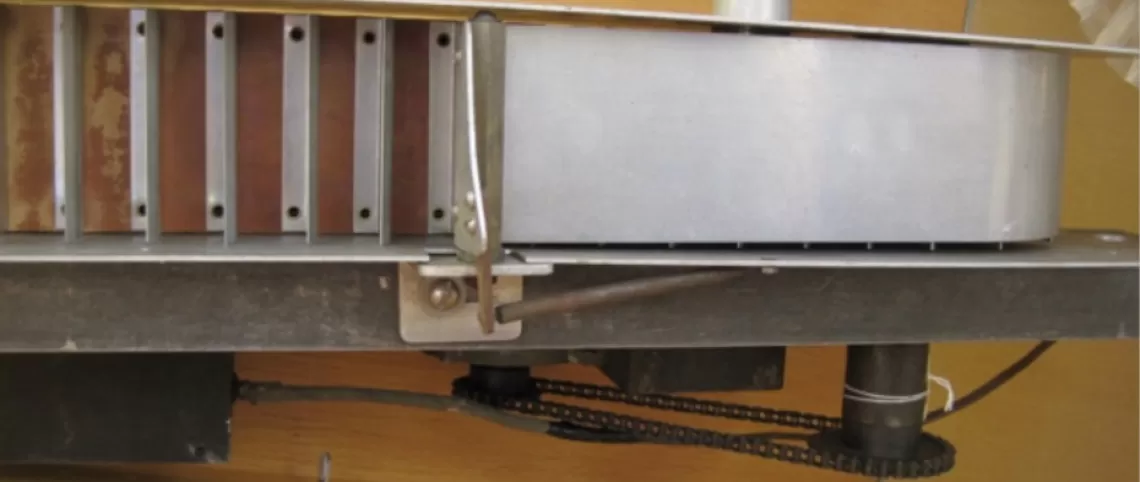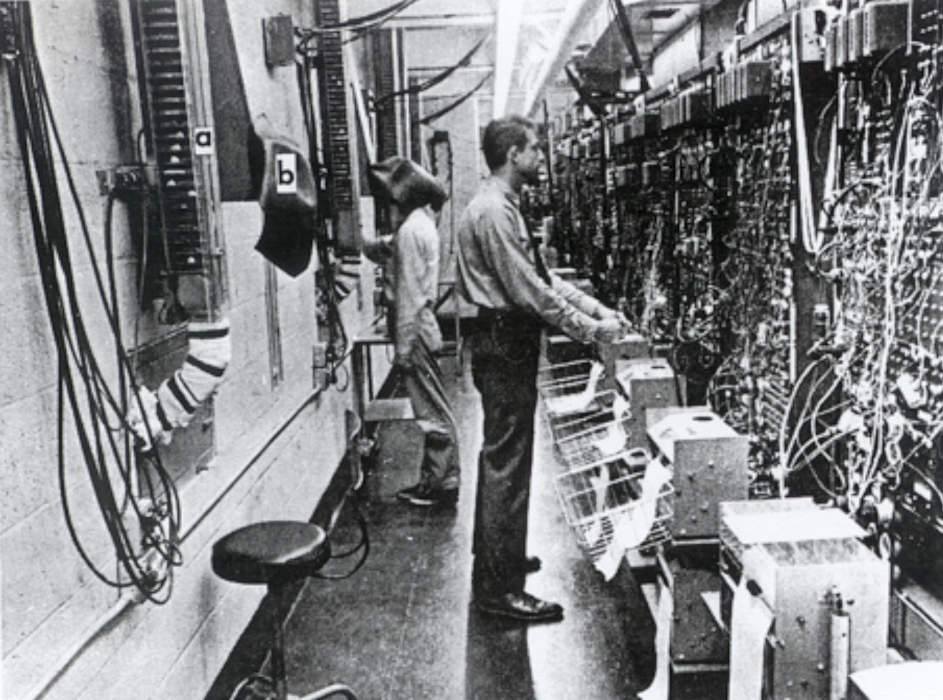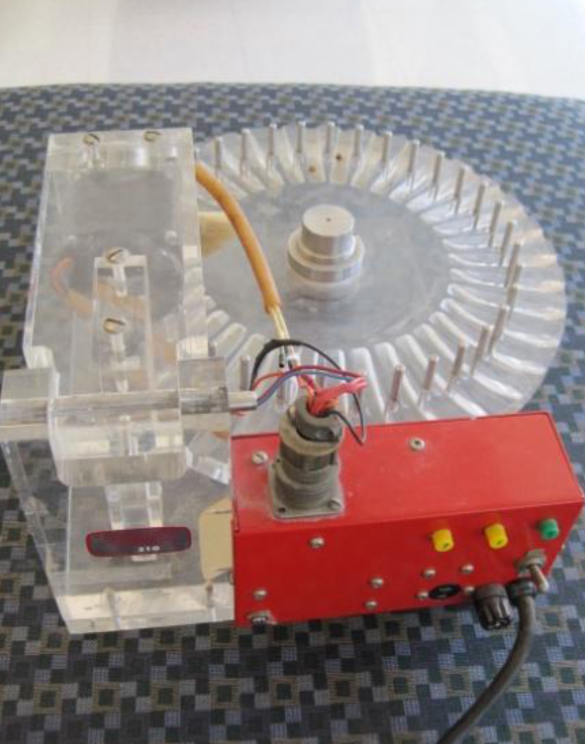
Vending machines have been a part of American culture since the Thomas Adams Gum Company began selling gum from them on New York City train platforms in 1888. Since that time, they have been developed into an important means of delivering all kinds of goods to consumers. It therefore should come as no surprise that the technology was adapted for delivering reinforcers, as this apparatus attests.
Gerbrands Company Clip-Type Universal Feeder
 Ogden Lindsley was a student of B. F. Skinner in the 1950s when he and Skinner began the first systematic study of human operant behavior under schedules of reinforcement. Working at the Mass. State Hospital at Waltham, Mass., Lindsley assembled what was to become a model operant conditioning laboratory for the study of the behavior of psychiatric patients in that facility. He is shown in that laboratory in the photograph in the figure below, and one of the devices featured in this display is labeled “a” in the photograph, in the foreground on the left side of the photograph. The white curved material at the bottom of the universal feeder connects the feeder to a reinforcer cup in the work station through a hole in the wall that separates the control room shown here from the work station (actually a small room).
Ogden Lindsley was a student of B. F. Skinner in the 1950s when he and Skinner began the first systematic study of human operant behavior under schedules of reinforcement. Working at the Mass. State Hospital at Waltham, Mass., Lindsley assembled what was to become a model operant conditioning laboratory for the study of the behavior of psychiatric patients in that facility. He is shown in that laboratory in the photograph in the figure below, and one of the devices featured in this display is labeled “a” in the photograph, in the foreground on the left side of the photograph. The white curved material at the bottom of the universal feeder connects the feeder to a reinforcer cup in the work station through a hole in the wall that separates the control room shown here from the work station (actually a small room).
It is a vending-machine type device for dispensing reinforcers (often cigarettes) as reinforcers when the subject met the requirement of the schedule. Remember, it was the 1950s, and anti-psychotic drugs had not yet found their way into use in psychiatric facilities in the United States. As a New York Times report reminds us, providing cigarettes to patients contributed to maintaining order in psychiatric facilities at a time when there were few or no psychotropic medications. Thus, it is not surprising that many patients smoked, that institutions encouraged it, and that smokes could be used as reinforcers for operant behavior.
 The device shown here was labeled a “universal feeder” because it could dispense as reinforcers a variety of items from trinkets to edibles (like candy or other snacks) to cigarettes to anything else that could fit on the small trays.
The device shown here was labeled a “universal feeder” because it could dispense as reinforcers a variety of items from trinkets to edibles (like candy or other snacks) to cigarettes to anything else that could fit on the small trays.
The universal feeder was attached such that when it is was operated its contents fell into a chute that led to an open tray where the subject could simply scoop up the delivered contents. The contents were hand loaded into the trays before a session started. Each time a schedule requirement was met, a motor turned the conveyer belt to which the trays were attached just enough to tilt one of the trays and release its contents into the chute. This process repeated each time a reinforcer was earned.
The Ralph Gerbrands Company manufactured two sizes of these universal feeders. A large one was over 5 feet high when placed in the vertical position. The smaller version, shown here, was identical in construction but about 3 ft (91 cm) tall.
Davis Scientific Drum-Type Universal Feeder
 Following the same pattern as food pellet dispensers for rats, universal feeders were manufactured both as Box or clip-type and drum (“Tommy-Gun”) type devices. The one displayed here illustrates the latter design. Reinforcers were placed in small troughs located at regular intervals around the plastic disk. When the reinforcement cycle started, a small brush, shown in the close-up, was operated through a 360-degree rotation. As the brush swept across the trough, the item in the trough was swept into a tube that was connected to the reinforcement delivery location and whatever the reinforcer was thus was presented to the subject or participant. Simultaneous with the sweep, through a gear operation, the rotation moved the disk such that the next trough aligned with the brush, ready for delivery with the onset of the next reinforcement cycle. This device was used with everything from tubifex worms delivered to fish to cigarettes for psychiatric patients.
Following the same pattern as food pellet dispensers for rats, universal feeders were manufactured both as Box or clip-type and drum (“Tommy-Gun”) type devices. The one displayed here illustrates the latter design. Reinforcers were placed in small troughs located at regular intervals around the plastic disk. When the reinforcement cycle started, a small brush, shown in the close-up, was operated through a 360-degree rotation. As the brush swept across the trough, the item in the trough was swept into a tube that was connected to the reinforcement delivery location and whatever the reinforcer was thus was presented to the subject or participant. Simultaneous with the sweep, through a gear operation, the rotation moved the disk such that the next trough aligned with the brush, ready for delivery with the onset of the next reinforcement cycle. This device was used with everything from tubifex worms delivered to fish to cigarettes for psychiatric patients.



